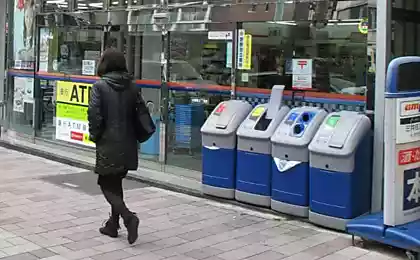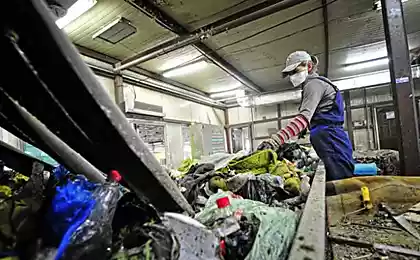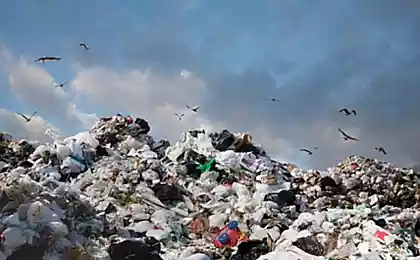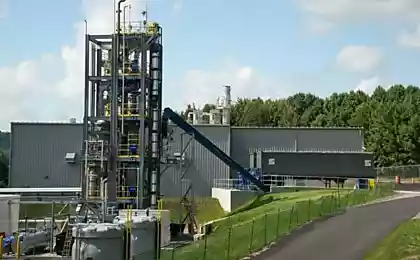676
How to create less waste - zero waste
We need to think more about the garbage we produce — where it comes from and where it goes, and most importantly, what happens to him next.

In Europe the average amount of garbage produced per person per year up to half a ton. In Sweden, it's a little less, around 461 kilograms — but Sweden recycles 99 percent of its garbage. This means that less than 1 percent of Swedish garbage ends its way in landfills.
The irrepressible growth of consumption leads to the fact that we do not think about the growing number of landfills and amount of waste. When the whole civilized world is struggling with reducing the amount of produced waste and its processing — we are increasing the pace of its production.
Now we produce over the year, around 220 kg of garbage or municipal solid waste (MSW). And it is twice less than them! But few know that the vast majority of this waste is not processed and transported to landfills in close proximity to our cities. With the expansion of such zones increases and their harmful effects on human health and the environment.
In fact, this garbage does not disappear. In this compressed form, it can stand decades. Recently, the US has dug up one such conserved the landfill 50 years ago and found that even the banana peel there not decomposed. A newspaper can be read as if they were thrown out a week ago. This can only mean one thing, the number of landfills will increase and they will occupy more and more space on the Planet. The high rate of consumption will lead to a huge landfill for metropolises, and will do.
Now in a country like Ukraine, 7% of the territory occupied by the landfill, whereas protected areas occupy only 1%.

Zero waste is an environmental change at the household level. This is a tangible, manageable, and realistic behavior on a daily basis. It helps to improve the quality of life by reducing habitats, saving time spent on the care of this area, and it saves money.
Ten years ago, few people thought about organic products, fair trade, farming animal cruelty, veganism, and non-toxic products in stores. But now consumer demand has come to this. And the number of such demanding and conscious consumers is growing every day and no one can stop.
Why the same cannot be done for zero waste, which use closed loop production, reusable, non-plastic packaging. Zero waste is the new ethical frontier for consumers, and if people want it badly enough, producers will be forced to react.
There is one big problem in adoption of this concept. Inwith auti reduce their waste is based on the idea not to buy. The rejection of goods which do not meet the standards of zero waste and many people do not want to accept it.

Around half of the total us waste – polymers and plastics, and a quarter of food waste, the rest – glass, textiles, rubber, paper.
Start to weigh your garbage for 21 days and make sure that the waste that goes to landfill, as much as possible. Use composting for organic waste in the yard or at the cottage. Get a few containers for different garbage (put 2 bins).
Refuse disposable. Use all reusable, fabric bags, glass jars or metal containers for food products, handkerchiefs, towels, Cutlery for a meal on the go or in transport, water bottles.
Always choosing reusable things, pay attention to the possibility of processing and repair. Be prepared to buy less and more expensive quality items that will last longer. This particularly applies to clothing.
Think of the alternative. Replace paper towels with rags. Use cloth diapers for your children and grandchildren. Use reusable pads for yourself. Buy bacteria and make your own yogurt in a glass jar. Buy unpackaged bar of soap. Stop using shampoo. Make deodorant with their hands. Replace plastic packaging on reusable wrapping paper.
There are countless alternative solutions. It will become obvious once you start looking and you will be rewarded by seeing how your garbage is significantly reduced.

In Europe the average amount of garbage produced per person per year up to half a ton. In Sweden, it's a little less, around 461 kilograms — but Sweden recycles 99 percent of its garbage. This means that less than 1 percent of Swedish garbage ends its way in landfills.
The irrepressible growth of consumption leads to the fact that we do not think about the growing number of landfills and amount of waste. When the whole civilized world is struggling with reducing the amount of produced waste and its processing — we are increasing the pace of its production.
Now we produce over the year, around 220 kg of garbage or municipal solid waste (MSW). And it is twice less than them! But few know that the vast majority of this waste is not processed and transported to landfills in close proximity to our cities. With the expansion of such zones increases and their harmful effects on human health and the environment.
In fact, this garbage does not disappear. In this compressed form, it can stand decades. Recently, the US has dug up one such conserved the landfill 50 years ago and found that even the banana peel there not decomposed. A newspaper can be read as if they were thrown out a week ago. This can only mean one thing, the number of landfills will increase and they will occupy more and more space on the Planet. The high rate of consumption will lead to a huge landfill for metropolises, and will do.
Now in a country like Ukraine, 7% of the territory occupied by the landfill, whereas protected areas occupy only 1%.

Zero waste is an environmental change at the household level. This is a tangible, manageable, and realistic behavior on a daily basis. It helps to improve the quality of life by reducing habitats, saving time spent on the care of this area, and it saves money.
Ten years ago, few people thought about organic products, fair trade, farming animal cruelty, veganism, and non-toxic products in stores. But now consumer demand has come to this. And the number of such demanding and conscious consumers is growing every day and no one can stop.
Why the same cannot be done for zero waste, which use closed loop production, reusable, non-plastic packaging. Zero waste is the new ethical frontier for consumers, and if people want it badly enough, producers will be forced to react.
There is one big problem in adoption of this concept. Inwith auti reduce their waste is based on the idea not to buy. The rejection of goods which do not meet the standards of zero waste and many people do not want to accept it.

Around half of the total us waste – polymers and plastics, and a quarter of food waste, the rest – glass, textiles, rubber, paper.
Start to weigh your garbage for 21 days and make sure that the waste that goes to landfill, as much as possible. Use composting for organic waste in the yard or at the cottage. Get a few containers for different garbage (put 2 bins).
Refuse disposable. Use all reusable, fabric bags, glass jars or metal containers for food products, handkerchiefs, towels, Cutlery for a meal on the go or in transport, water bottles.
Always choosing reusable things, pay attention to the possibility of processing and repair. Be prepared to buy less and more expensive quality items that will last longer. This particularly applies to clothing.
Think of the alternative. Replace paper towels with rags. Use cloth diapers for your children and grandchildren. Use reusable pads for yourself. Buy bacteria and make your own yogurt in a glass jar. Buy unpackaged bar of soap. Stop using shampoo. Make deodorant with their hands. Replace plastic packaging on reusable wrapping paper.
There are countless alternative solutions. It will become obvious once you start looking and you will be rewarded by seeing how your garbage is significantly reduced.
The Nobel prize in medicine was awarded for the navigation neurons
House in Norway generates twice as much energy than it consumes






















